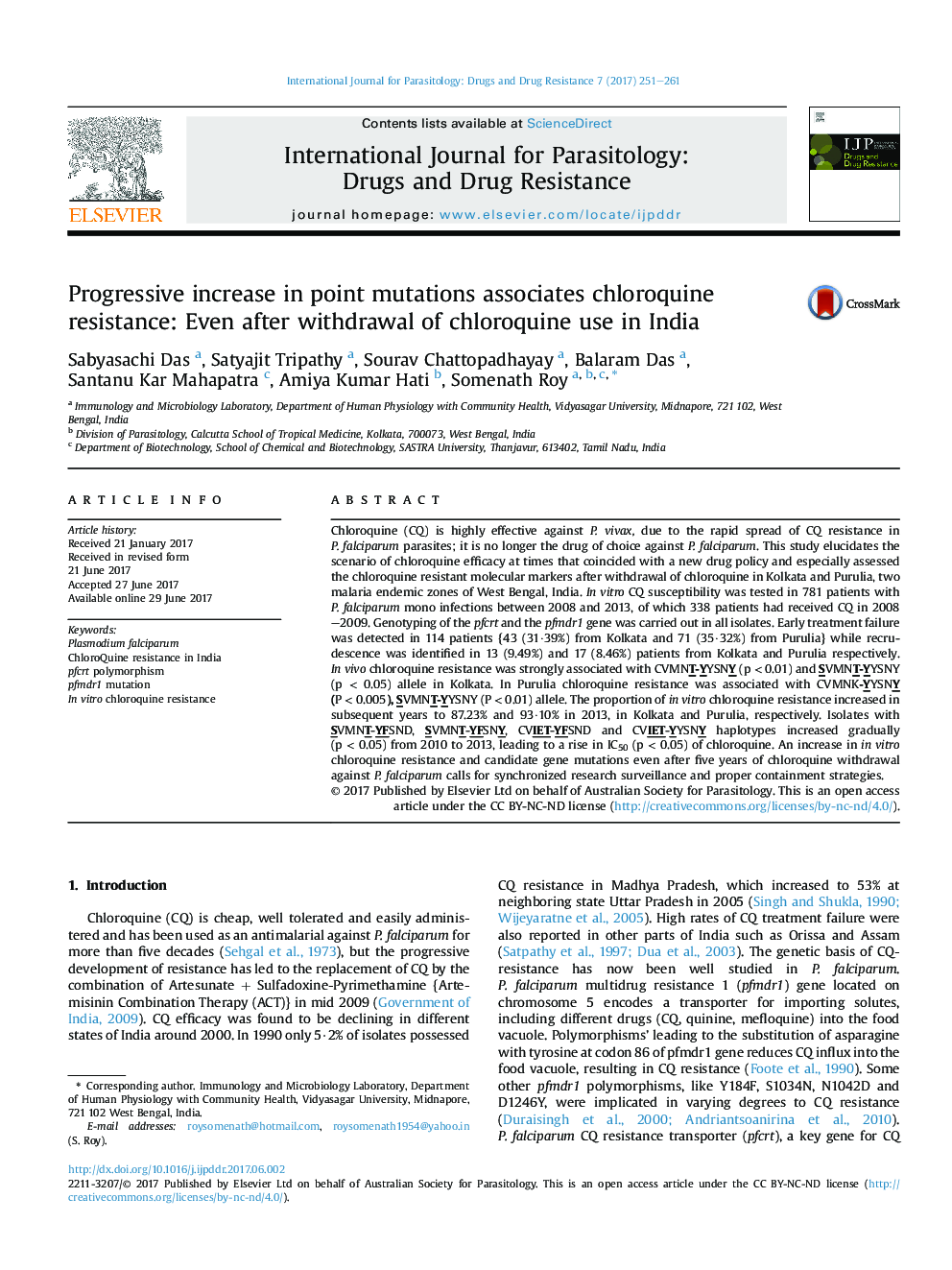| کد مقاله | کد نشریه | سال انتشار | مقاله انگلیسی | نسخه تمام متن |
|---|---|---|---|---|
| 5517837 | 1543805 | 2017 | 11 صفحه PDF | دانلود رایگان |
- Unremitting increase in pfcrt and pfmdr1 polymorphism without CQ drug pressure.
- In vitro CQ resistance was still increase after 5 years of ACT implementation.
- Regional bias in pfcrt and pfmdr1 polymorphism associates CQ resistance.
- Irresponsive self medication (CQ) by civilians made the situation worse day by day.
Chloroquine (CQ) is highly effective against P. vivax, due to the rapid spread of CQ resistance in P. falciparum parasites; it is no longer the drug of choice against P. falciparum. This study elucidates the scenario of chloroquine efficacy at times that coincided with a new drug policy and especially assessed the chloroquine resistant molecular markers after withdrawal of chloroquine in Kolkata and Purulia, two malaria endemic zones of West Bengal, India. In vitro CQ susceptibility was tested in 781 patients with P. falciparum mono infections between 2008 and 2013, of which 338 patients had received CQ in 2008-2009. Genotyping of the pfcrt and the pfmdr1 gene was carried out in all isolates. Early treatment failure was detected in 114 patients {43 (31·39%) from Kolkata and 71 (35·32%) from Purulia} while recrudescence was identified in 13 (9.49%) and 17 (8.46%) patients from Kolkata and Purulia respectively. In vivo chloroquine resistance was strongly associated with CVMNT-YYSNY (p < 0.01) and SVMNT-YYSNY (p < 0.05) allele in Kolkata. In Purulia chloroquine resistance was associated with CVMNK-YYSNY (P < 0.005), SVMNT-YYSNY (P < 0.01) allele. The proportion of in vitro chloroquine resistance increased in subsequent years to 87.23% and 93·10% in 2013, in Kolkata and Purulia, respectively. Isolates with SVMNT-YFSND, SVMNT-YFSNY, CVIET-YFSND and CVIET-YYSNY haplotypes increased gradually (p < 0.05) from 2010 to 2013, leading to a rise in IC50 (p < 0.05) of chloroquine. An increase in in vitro chloroquine resistance and candidate gene mutations even after five years of chloroquine withdrawal against P. falciparum calls for synchronized research surveillance and proper containment strategies.
313
Journal: International Journal for Parasitology: Drugs and Drug Resistance - Volume 7, Issue 3, December 2017, Pages 251-261
